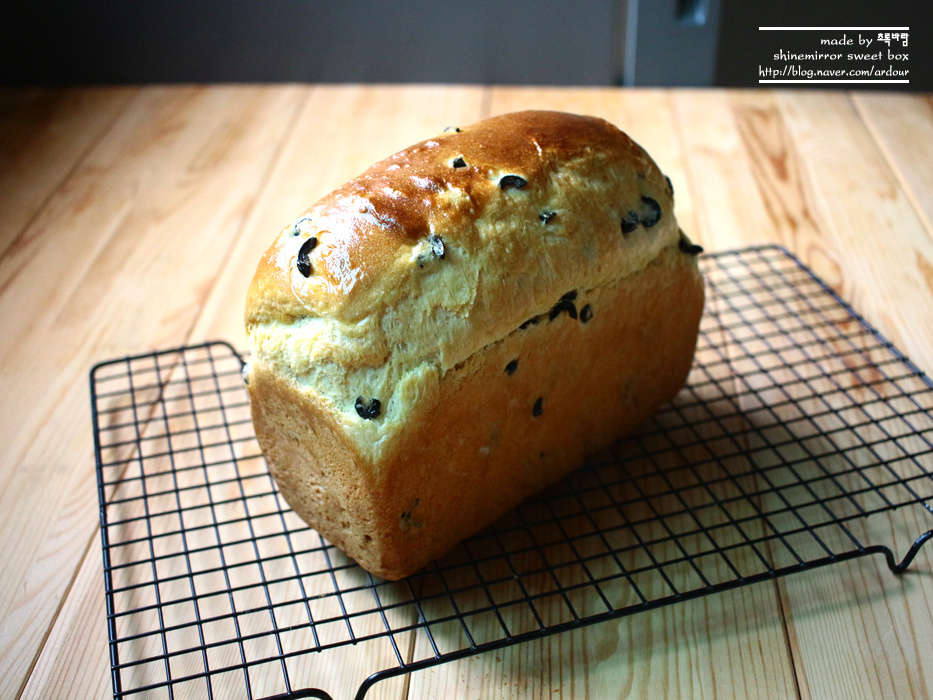Aromatic Olive Bread Loaf
Bake Your Own Delicious Olive Bread at Home!

I recently made this delicious olive bread using leftover olives from a pizza night. This recipe is so versatile; you can make pizza, this flavorful olive bread, and even a fermented cake (recipe coming soon!) with just one can of olives. Olive fermented cakes are surprisingly charming, and I’ll share that recipe soon! This olive bread turned out beautifully with a fantastic oven spring, resulting in a wonderfully tasty loaf. The weather is perfect for baking right now, even if it’s a bit warm! Let’s bake some delicious olive bread together.
Bread Ingredients- 1 Cornbread loaf pan
- 250g Bread flour
- 20g Sugar
- 3g Salt
- 4g Instant dry yeast
- 2 Egg yolks (or approx. 35g whole egg)
- 140-155g Water (adjust based on dough consistency)
- 20g Olive oil
- 90g Black olives (pitted)
Cooking Instructions
Step 1
First, drain the pitted black olives thoroughly on a sieve. Chop them into small pieces, about 1cm in size. Lightly toss the chopped olives with a bit of flour (this is your ‘dusting flour’) to prevent them from sticking together. This step ensures the olives are evenly distributed throughout the dough when mixed.

Step 2
In a large bowl, combine the bread flour, sugar, salt, and instant dry yeast. Mix them gently. Make a well in the center and add the egg yolks and 140g of water. Begin mixing with your hands, a scraper, or a stand mixer until a shaggy dough forms. Once it comes together, add the olive oil. Knead the dough until it becomes smooth and elastic, developing a thin membrane when gently stretched. If you don’t have egg yolks, approximately 35g of a whole egg can be used as a substitute.

Step 3
Add the prepared chopped black olives to the dough. Use a spatula or your hands to gently mix them in, ensuring they are evenly dispersed and don’t clump together. Form the dough into a cohesive ball.

Step 4
Place the dough in a lightly oiled bowl, cover it with plastic wrap or a damp cloth, and let it undergo its first fermentation (bulk fermentation) in a warm place (around 25-28°C or 77-82°F). Allow the dough to rise until it has doubled or tripled in volume, which typically takes about 1 to 1.5 hours, depending on the ambient temperature.

Step 5
Once the first fermentation is complete, gently punch down the dough on a lightly floured surface to release the gases. Shape it into a smooth ball and place it back in the bowl. Cover again and let it rest for a short intermediate proof (bench rest) of 10-15 minutes. This step makes the dough easier to handle for shaping.

Step 6
After the intermediate proof, gently press the dough down to release any remaining large bubbles. Use a rolling pin to flatten it into a rectangle. Then, carefully roll it up tightly into a log shape for molding.

Step 7
Grease your cornbread loaf pan thoroughly with butter or oil. Place the shaped dough log into the prepared pan. Gently press down on the dough to ensure it fills the pan evenly. Cover the pan with plastic wrap or a damp cloth to begin the second fermentation (final proof).

Step 8
For the second proof, let the dough rise in a warm place until the top of the dough is about 1cm (0.4 inches) above the rim of the pan (this usually takes 40-50 minutes). Preheat your oven to 180°C (350°F). Once proofed, bake the loaf in the preheated oven for 30-35 minutes. If the top starts to brown too quickly after about 12 minutes, you can cover it loosely with aluminum foil to prevent over-browning and ensure the inside cooks through.



